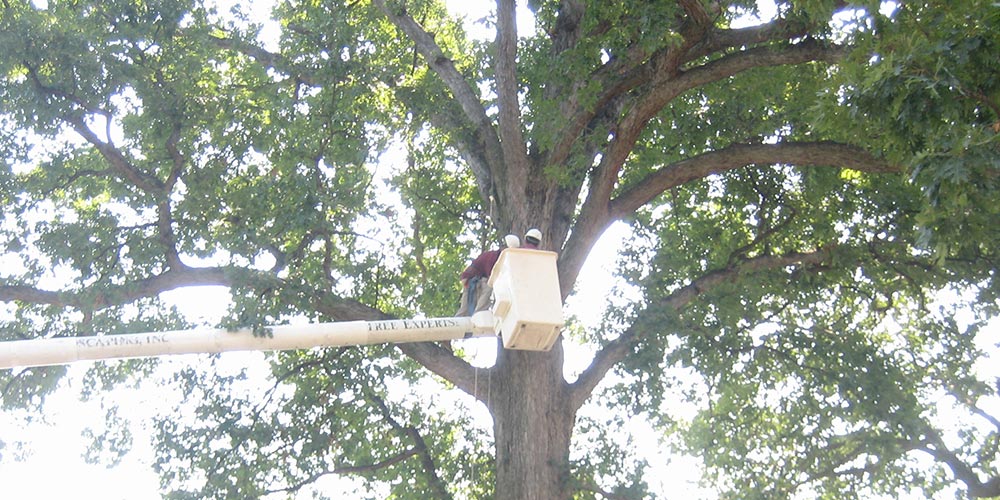
What are The Safety Precautions For Tree Cutting?
Whether you are a seasoned tree cutter or it’s your first time, tree cutting can be dangerous. Therefore, safety should always be on your priority list as you undertake this activity.
But just what should be the safety precautions you take as you begin your tree-cutting session? Here are some essential safety precautions to follow as given by tree cutting services:
Get proper training and equipment.
Contrary to what most people believe, tree work can be complex, and this is where training comes in. You must understand the nuances of tree biology, physics, and cutting techniques. Here’s why:
Safety knowledge: You better understand safety procedures and protocols with proper training. In that regard, you can assess risks, identify potential hazards, and act accordingly to prevent tragedy.
Equipment expertise: If you are into serious tree cutting, then you will have to use specialized equipment like chainsaws, harnesses, and rigging systems. During training, you will be taught how to use these tools, maintain them, and troubleshoot problems.
Without training, chances are high that you could be injured while cutting trees are trained not only in how to use these tools but also in maintaining and troubleshooting them. Using equipment without proper knowledge can lead to accidents and injuries.
Precision and efficiency: You can cut trees efficiently and precisely as a trained tree cutter. Subsequently, this reduces the chances of trees falling and causing damage or injury.
Legal and environmental compliance: Did you know environmental laws or local regulations protect some trees? As a trained tree cutter, you will be in the know about such information and ultimately avoid getting into trouble with the law.
Assess the tree
Tree assessment is a critical step that can significantly influence the safety of tree cutting. Here’s why it matters:
Hazard identification: When you assess the condition of a tree, you will be in a better position to identify and foresee potential hazards. For instance, if there are signs of disease or decay, chances are that the tree may fall unexpectedly during cutting.
Knowing this, you will be able to put measures in place to guarantee your safety and those around you and prevent damage to nearby structures.
Structural issues: Some trees have structural issues such as imbalanced growth or multiple trunks and may require special considerations. This is because they will likely fall unpredictably and pose a challenge during removal.
With proper training, you will know how to go about the same.
Preservation: Assessing the tree’s health can also help determine if there are alternatives to complete removal. Sometimes, trimming, pruning, or other treatments can save a tree that might otherwise be deemed unsafe for cutting.
Wear appropriate gear
There’s appropriate gear to wear during tree cutting to increase your safety while undertaking the activity.
Here’s what you are generally looking at:
Head protection: You need a hard hat to protect your head from injury. During tree cutting, falling branches, tools, or debris can send you to the emergency room. This makes a hard hat indispensable.
Eye protection: As you cut trees, sawdust, wood chips, and other debris fly around. As such, you will need safety goggles to protect your eyes.
Ear protection: The tools you use for tree cutting, such as chainsaws, can produce a lot of noise. Over time, this can damage your hearing, so it is important to protect your ears. You can do that with earmuffs or earplugs.
Hand and foot protection: When cutting trees, your hands are prone to injury. You could get splinters, cuts, or even blisters. You need a pair of gloves to help prevent that.
Face shield: Your face is also prone to injury when cutting trees. In that regard, you want to invest in a face shield to protect flying debris and wood chips from injuring your face.
Plan the cutting
Having a plan in place will not only save you time but also help you avoid unpleasant surprises. Think beforehand about the direction you want your tree to fall and any potential damage it may cause.
Maintain a safe distance.
Chances are that there will be bystanders as you cut your trees. While you cannot stop them from being in proximity, you should encourage them to maintain a safe distance to prevent them from getting injured during tree-cutting.
Use proper cutting techniques.
During training, you will learn tree-cutting techniques such as back-cutting and notching. Using the proper technique reduces the chances of accidents happening.
Inspect your tools
You want to inspect and maintain your tree-cutting tools regularly. Damaged or dull tools are not only likely to cause accidents, but they are also cumbersome to use.
Be mindful of power lines.
You must be extra careful if the trees you cut are near power lines. If this is the case, do not attempt to cut the trees yourself. Instead, contact your local utility company so that they can assign professionals to remove the trees safely.
Stay sober and alert.
Regarding tree cutting, maintaining a clear mind and staying completely sober is not just a suggestion – it’s an absolute necessity.
Drugs and alcohol will likely impair your ability to make sound and quick decisions. Of course, this can lead to property damage and injury.
The same impairment can affect your coordination and balance, leading to injury and damage to equipment.
Avoid working alone
Regardless of how competent you think you are, try to have a person at hand who can help in an emergency. This increases your safety chances.
Final Thoughts
Tree cutting is not just about using tools to remove a tree. Instead, it involves careful planning, comprehensive training, and strict adherence to safety precautions.
Ignoring these steps can result in accidents, property damage, or even loss of life. If you are uncertain about your ability to cut a tree safely, consulting with or hiring tree services Kensington to do the job is always best. Safety should never be compromised when working with trees.
